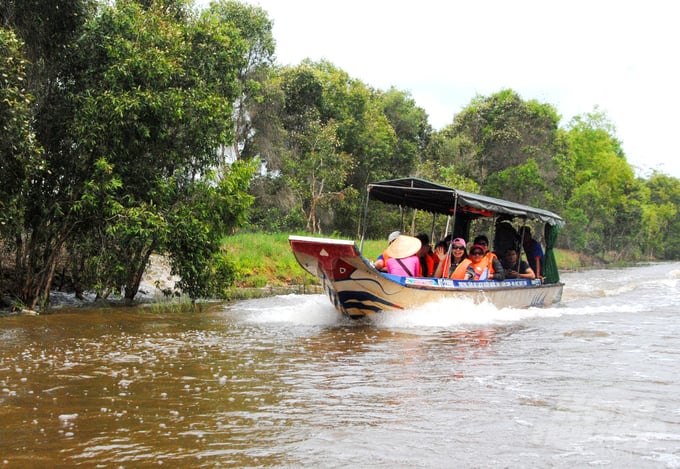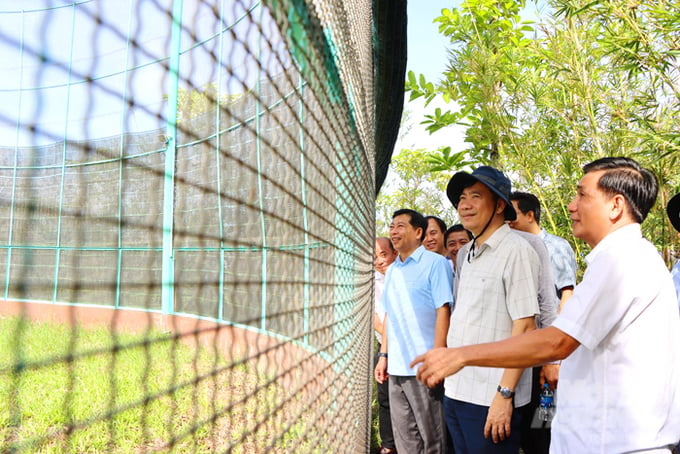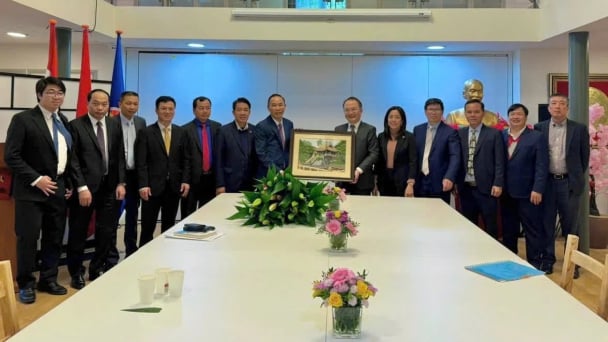June 16, 2025 | 15:20 GMT +7
June 16, 2025 | 15:20 GMT +7
Hotline: 0913.378.918
June 16, 2025 | 15:20 GMT +7
Hotline: 0913.378.918

The melaleuca forest in subzone A1 is recovering quite well. Photo: Le Hoang Vu.
More than four months after the fire at subzone A1 of Tram Chim National Park (Tam Nong district, Dong Thap province), which burned 20.4 hectares (18.2 hectares under the canopy and 1.84 hectares of grassland), the affected area is showing good recovery. Many young shoots are growing on the melaleuca trees, and the forest canopy recovery rate is about 11.43%. Additionally, the burned forest area has seen dense seed regeneration, though the seedlings are still small.
Recently, Mr. Pham Thien Nghia, Chairman of the Dong Thap People’s Committee, conducted a survey to assess the ecological recovery of the burned forest area in subzone A1 of Tram Chim National Park.
Chairman Mr. Nghia stated, “This is the second time I have directly surveyed the forest areas at Tram Chim National Park and observed the forest’s recovery since the fire a few months ago. I have also directed local authorities, the Department of Agriculture and Rural Development, and the Tram Chim National Park Management Board to continue monitoring and assessing the forest’s recovery. Research should focus on reducing water levels to accelerate melaleuca forest regeneration. Additionally, efforts must be made to control access to the park, preventing illegal hunting and livestock grazing.”
Currently, the Tram Chim National Park Management Board is implementing the infrastructure project supporting the program to restore and develop the population of red-crowned cranes at the Park.
As part of this, several facilities have been completed, including enclosures for two adult cranes, a pen for juvenile cranes (from six months old), and pairing enclosures for individual cranes. The technical team responsible for crane care is ready. The park has also collaborated with Saigon Zoo and Botanical Garden and relevant experts to finalize a list of equipment, food sources, and veterinary supplies needed for raising red-crowned cranes.

Mr. Pham Thien Nghia (center), Chairman of the Dong Thap People’s Committee, inspects the enclosure for two red-crowned cranes. Photo: Le Hoang Vu.
During the survey, Chairman Pham Thien Nghia suggested that Tram Chim National Park should research and introduce areas to display and showcase plants that serve as primary food sources for the cranes, such as water chestnut plant. He also asked Tam Nong district to consider developing startup products from the water chestnut plant, which would not only create added value but also provide products for tourists visiting Tram Chim National Park.
Translated by Kieu Chi

(VAN) The working delegation from the Ministry of Agriculture and Environment conducted an important trip to the Netherlands to strengthen strategic partnerships and sustainable development in the agricultural sector.

(VAN) The letter ‘A Plea from the Ocean’ not only evokes emotion but also awakens the human conscience to the responsibility of protecting life on Earth.

(VAN) The Department of Agriculture in South Africa has announced the country’s first mass vaccination of poultry to prevent local birds from contracting avian influenza.

(VAN) Establishment of the Mekong Delta Regional Agricultural Linkage Center, aiming for a closed value chain, deep processing, trading platforms, and international market connectivity.

(VAN) Gia Lai province has recently recorded 460 rare species of animals and plants, contributing to forest conservation and biodiversity planning in the region.

(VAN) Ms. Caroline Beresford, New Zealand Ambassador to Vietnam, expressed confidence that agricultural cooperation between Vietnam and New Zealand will develop sustainably, be climate-resilient, and promote gender equality.

(VAN) Vietnam reaffirms its commitment to international cooperation in fostering sustainable and responsible fisheries while ensuring resilient livelihoods for small-scale fishing communities.